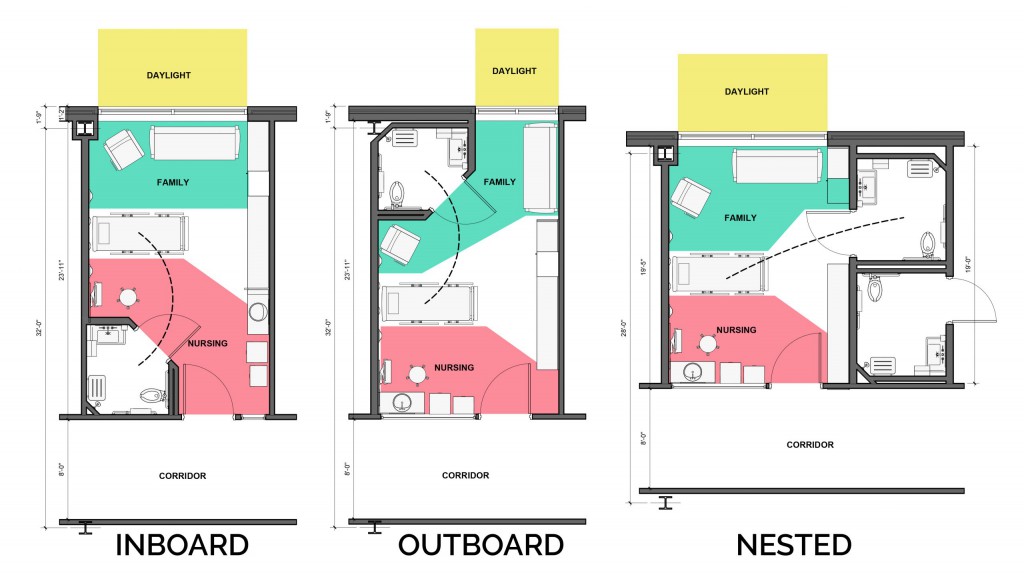How the configuration of the bathroom in the patient room affects nursing, daylight and family space.
There are three typical patient toilet configurations we see in existing and new hospital patient floors – Inboard, Outboard and Nested. Each of these configurations provide tradeoffs for daylighting, nursing and family space.

Inboard Toilet
The most common toilet configuration in typical patient rooms is the inboard toilet, meaning the toilet is on the inboard side of the patient room, closest to the corridor. This layout creates a small vestibule at the entry to the room, providing patient privacy, but limits the visibility from the corridor for nurse observation. By moving the toilet to the interior, exterior views can be maximized, providing ample daylight and views for the patient. This type also provides the most flexibility for the family, as travel to the patient toilet is not required through the family space.
Outboard Toilet
The most common toilet configuration in Intensive Care Units (ICU) or Stepdown/Critical Care is the outboard toilet. This layout allows for larger door types, like glass sliding doors, along the corridor that provide the quickest access/egress in the event of a coding patient and also provide the most visibility for the clinical team. By moving the toilet to the exterior, this does reduce the opportunity for windows and daylight. With the patient toilet on the exterior wall, the space available for the family is also impacted, typically resulting in an L-shaped space and requires the patient to travel through the family space to access the restroom.
Nested Toilet
Less common than inboard or outboard, but still very prevalent, is the nested toilet. This configuration places the two toilets between two rooms, one inboard and one outboard. This option allows for a much shallower patient room depth, and we have utilized it when renovating existing patient floors to meet newer, more stringent FGI standards. Since the toilets are nested, both nurse/clinical visibility and daylight can be maximized. Nested toilets room layouts cannot be set up as universal rooms since every other room varies on the patient going to the nursing side or family side, making it less likely a candidate for prefab toilet rooms.
Conclusion
Many hospitals will have a variety of patient room/bathroom configurations based on how the hospital was developed over many decades. Typically, inboard is utilized for less acute patients (Med-Surg) and outboard for the most acute (ICU, CCU). Current trends are leaning towards universal rooms with inboard toilets that are single handed vs mirrored (back to back). Nested toilets still provide a viable solution for existing patient floors which may be limited by column and corridor layouts to perform 3 to 2 patient room conversions to meet current FGI standards.
